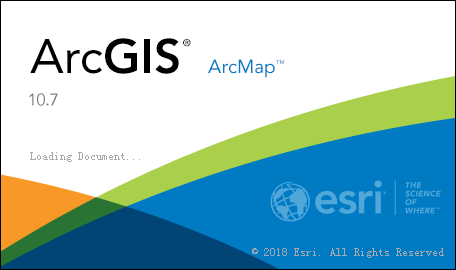Planetary Winds: Their Types and Definition
Planetary winds :
These winds being controlled by the pressure belts, blow towards the same direction throughout the whole year. The planetary wind is of three types such as : the trade wind, the westerlies and the polar wind. So, in short, the characteristics of planetary winds are as follows:
- These winds being controlled by the pressure belts blow towards the same direction throughout the whole year.
- Planetary winds are also known as permanent or prevailing winds
- Blow from high to low pressure, over the earth surface & oceans throughout the year & in a particular direction
- These winds are divided into 3 categories viz.
- Trade Winds (Tropical Easterlies)
- Westerlies
- Polar winds (Polar Easterlies)
1. Trade Winds (Tropical Easterlies)
The sun’s rays fall vertically over the equatorial region, so the air becomes hot and goes upwards. Since the pressure is less upward, the rising air gets room for expansion and consequently the air becomes cool and dense. The cool air could not come down directly due to warm air at the bottom. As a result, the air moves towards north and south directions through the upper atmosphere. Moving upto 30° latitudes some part of this air finds its way to come downward and blows towards the equatorial low pressure belt. This part of the air is known as the Trade Wind. According to Ferrel’s Law, the trade wind blows from north-east in the northern hemisphere and south-east in the southern hemisphere.
The trade wind of northern hemisphere is known as North-East Trade Wind and that of southern hemisphere as South-East Trade Wind. The sky remains clear and the weather is hot and dry as this trade wind originates in the high pressure zones. The big deserts of the world are situated nearer to this area. For example, the Sahara desert, the Lybian desert, the Arabian desert in the northern hemisphere and the Kalahari desert in the southern hemisphere can be mentioned.
So, the main characteristics can be summed up as follows:
- Winds blowing from subtropical high pressure area to equatorial low pressure area (Extremely steady winds)
- Since they travel from high latitude to low latitude area, they become gradually hot & dry and hence have a great capacity to hold moisture
- They cause considerable rainfall on eastern margins of the continents as they get moisture after blowing over oceans
- These winds converge near equator & form ITCZ, Here these winds rises & causes heavy rainfall
2. The Westerlies :
Some part of the air from 30° latitude blows towards the poles over the surface of the earth and after reaching 60° latitude faces the cold and dense air coming from the poles. So, comparatively the warm and light air from the tropical areas rises above the dense cold polar air and a part of it blows towards the polar low pressure belt. This is known as West Wind. In the northern hemisphere, it blows from south-west and in the southern hemisphere from north-west. As the area of the landmass is greater in the northern hemisphere, so locally, some changes occur in the air motion. However, in the southern hemisphere, the maximum area is covered by the water bodies and hence the west wind can move uninterrupted. The velocity of the westerlies reaches at the highest between 40° to 47° South latitude. This region is called Roaring Forties. This air movement is known as Brave West Winds. Two more air masses regularly move from north and south polar high belts towards the sub-polar lows. These are known as north-east and south-east polar winds. In this, the circulation of planetary wind system (the trade, the westerlies and the polar) exists between the equator and the poles.
Major characteristics of the westerlies can be summed up as follows:
- Winds blowing from subtropical high pressure belts towards subtropical low pressure belts
- Blow from S – W to N – E under Coriolis effect in N – Hemisphere & from N – W to S – E in S – Hemisphere
- Blow from lower latitudes to higher latitudes
- Cause considerable rainfall particularly on western margins of the continents
- More consistent in direction & blow with stronger force in S – Hemisphere due to lesser obstructions from continents
- Also known as brave winds or roaring forties, furious fifties & shrieking sixties according to the varying degree of storminess in the latitudes in which they blow.
- It must be noted that not all the western coast of the temperate zone (30* – 60*) receive Westerlies throughout the year due to shifting of wind belts coz of earth’s inclination.
3. Polar winds (Polar Easterlies)
The polar easterlies are the dry, cold prevailing winds that blow from the high-pressure areas of the polar highs at the north and south poles towards low-pressure areas within the Westerlies at high latitudes. Cold air subsides at the pole creating the high pressure, forcing a southerly (northward in the southern hemisphere) outflow of air towards the equator. This outflow is then deflected westward by the Coriolis effect, therefore these prevailing winds blow from the east to the west. Since the winds originate in the east, they are then known as easterlies. Unlike the westerlies in the middle latitudes, the polar easterlies are often weak and irregular.
So, Major Characteristics can be pointed out as follows:
- Winds blowing from polar high to sub polar low pressure belt
- Are very cold in nature as originate in polar areas & do not cause much rainfall
- These winds give birth to cyclones when they come in contact with westerlies
- Brings frequent change in weather conditions & causes heavy rainfall


Helpful
ReplyDeleteHelpful
ReplyDeleteGood one
ReplyDeleteTHANK YOU
DeleteI UNDERSTOOD
ReplyDelete